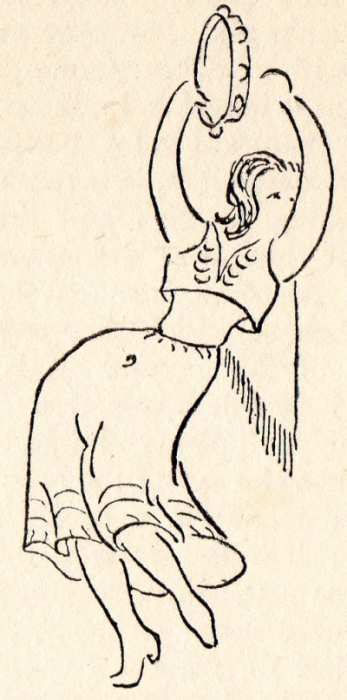Chapter Twenty-eight – Flamencos (Part Two)
Cantar
Cantar : The cantos flamencos are sung in this way : the signer, whose name is Niño de Utrera or something of that sort, sits down on a chair among the guitar-players, who plunge into a jangling overture interspersed with pizzicato swirlings, pauses and breaks; and to this the singer begins to add his warblings like a canary, with eyes half closed, head thrown back and hands resting on his knees.
Yes, he screeches like a bird; he unsheathes his voice in a long, full-throated yell, which gets louder and louder, and is appallingly intense and protracted, as if, for a bet, he was trying to find out how long he could keep it up with one breath; suddenly this outstretched voice begins to quaver in a long trill, a protracted and piercing coloratura, which indulges in a tune of its own, performs a fluttering ripple, starts off on a queer, graceful meander, and suddenly sinks and dies away as the guitars chime in with a brisk strumming.

And with their strains is joined and mingled this naked, shrill and rhetorical voice, bewailing its distress or whatever it is, in a passionate recitative, uncoiling sluggish and drunken from the abrupt rhythm of the guitars, and with one gasp swerving into that long, billowy vocal arabesque which dies away amid the clattering of the guitars.
It is just like a shiny and flexible blade describing in the air luminous ripples and figures of eight; it is also like the call of the muezzin and the enraptured strains of a canary chirping on his perch; it is the dirge of the wilderness and, at the same time, a specimen of prodigious professional virtuosity; it contains a great deal of natural gusto, of gipsyish hocus-pocus, a certain amount of Moorish artifice and untrammelled candour.
It has nothing to do with the honeyed voices and the cooing of the Venetian gondoliers and the Neapolitan tricksters; in Spain they shout at the top of their voices, harshly and frantically.
The songs are generally filled with woes of love, with taunts, jealousy and revenge; they are a king of epigram in one quatrain, set to music and prolonged by the wave of a slowly uncoiling lingering trill.

This is how they sing the seguidillas, as well as the malagueñas, granadinas, tarantas, soleres, vidalitas, bulerías and other types of song, which differ from each other more in their contents than their form; in fact, even the saetas, which are sung at Seville in the processions during the Holy Week, have the same wild and passionate flamenco style as the amorous seguidilla.
